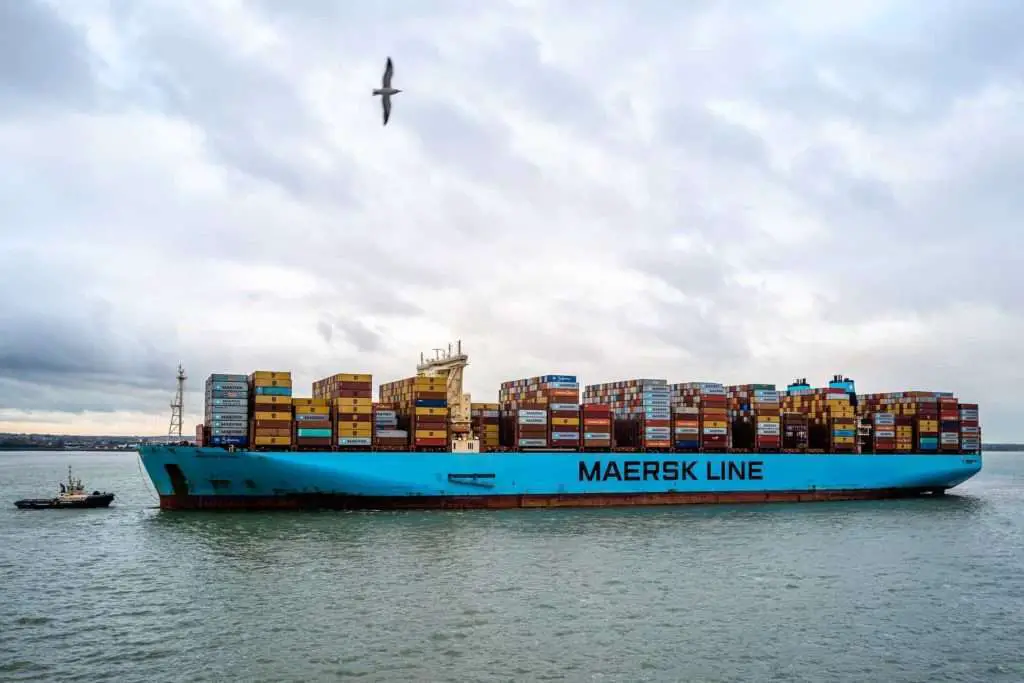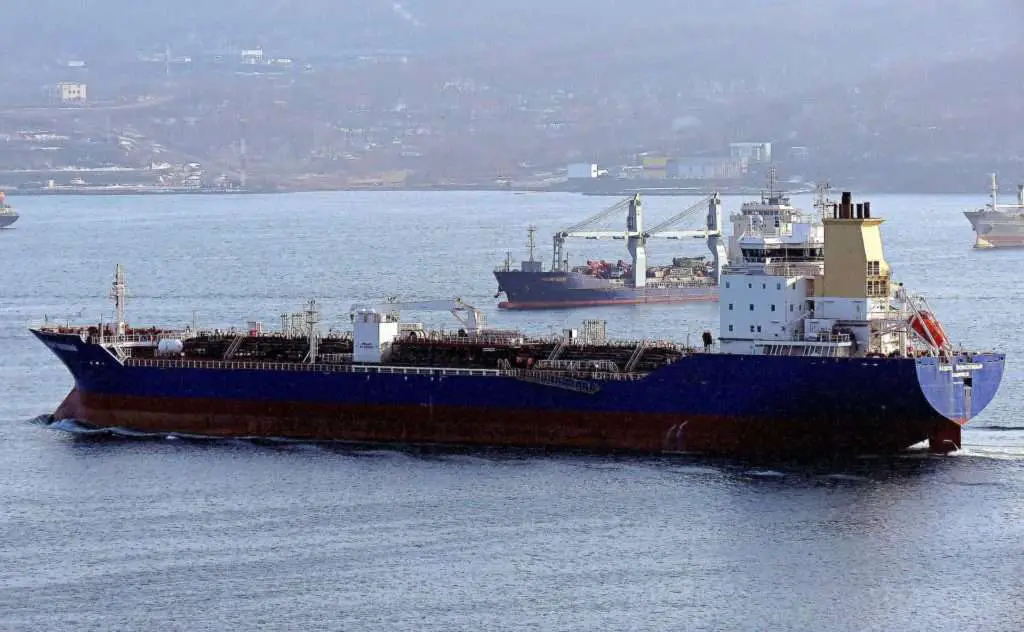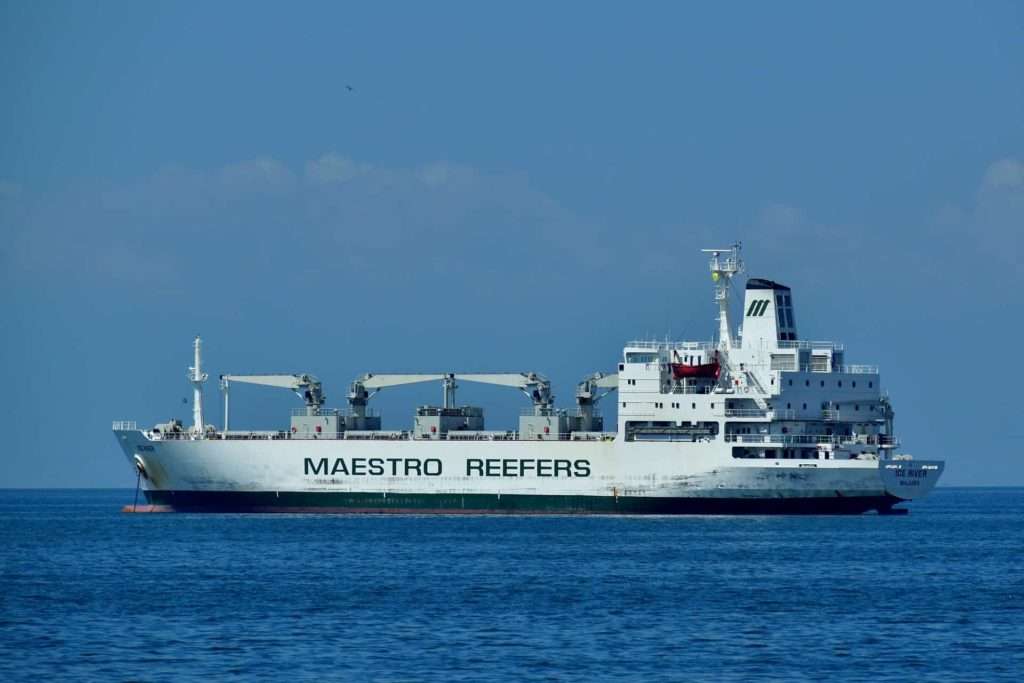
Cargo ships are expensive. First, the ship itself already cost many millions. Design fees, material, electronic systems installed, machinery, and labor costs all together make a cargo ship worth over tens of a hundred million.
Besides the ship’s cost, there is still an operating cost to add to it. Cargo ships make money by transporting cargoes. As long as the ship moves, operation costs will occur. Some basic operation costs include insurance, maintenance, crew’s salary, fuel cost, port cost, etc.
Based on transportgeography.org, a standard container ship ( with a capacity of 3000-5000 TEU) has an operating cost of about $9 million per year. In summary, cargo ships are expensive to buy and expensive to operate.
1, Container ship

According to en.wikipedia.org In 2010, the average price for a geared 500-TEU container ship was $10 million, while gearless ships of 6,500 and 12,000 TEU averaged prices of $74 million and $105 million respectively. Secondhand prices for 10-year-old geared container ships of 500-, 2,500-, and 3,500-TEU capacity averaged prices of $4 million, $15 million, and $18 million respectively.
Container ships have crane on board called geared, while container ships do not have cranes on board called gearless
The world’s largest container ship in 2022 is Ever Ace, with a capacity of 23,992 TEUs. The Ever Ace, which has a deck the equivalent size of four football pitches, cost around £125million ( approximately 137.3 million dollars). South Korea-based Samsung Heavy Industries builds Ever Ace and she is one of the Evergreen Marine Corp’s fleets. (according to Felixstowe. nub. news).
Ever Ace is the biggest container ship in the world but not the most expensive one. Tripe E class container ships owned by Maersk Line cost roughly $190 million per ship.
Triple E Class is a family of very large container ships with a capacity of more than 18,000 TEUs. The ships are 399.2 meters (1,309 ft 9 in) long and 59 meters (193 ft 7 in) wide.
The name “Triple E” is derived from the class’s three design principles: “Economy of scale, Energy efficiency, and Environmental impact improvement”.
Maersk line owns 20 Triple E class container ship
2, Tanker ship

According to wikipedia.org that a tanker ship with DWT (deadweight tonnage) is between 45,000~160,000 and the price is around $60 million. A huge tanker ship or ultra-large tanker ship with DWT between 160,000~549,999 and the price is about $120 million.
The cost of operating the largest tankers, the Very Large Crude Carriers, is nearly $10,000 and $12,000 per day.
Many businesses choose to charter a tanker ship instead of owning one because of the high cost. According to www.statistics.com the average charter price of $59,300 per day in 2020 is to charter an LNG tanker with a 160,000 cubic meter storage capacity.
Liberty bay is an 820-foot, 114,000 dwt Aframax tanker. This tanker has an 800,000-barrel capacity and supplies crude oil from Alaska to refineries along with the U.S. west coast. The price of this oil tanker is approximately $184.7million. (www.turkishmaritime.com.tr)
3, Bulk Carrier

A bulk carrier is a cargo ship designed to transport unpackaged bulk cargo, like grains, sand, coal, ore, cement, etc.
Bulk carriers are categorized into six major sizes based on dead weight tonnage: small, handysize, handymax, Panamax, Capesize, and very large. Handysize and handymax are the popular sizes of bulk carriers. The average new handymax is around $25 million, and the used one is about $7 million. The charter price per day is roughly $9,000~$30,000.
Valemax is the largest bulk carrier class in terms of DWT. Valemax-class ships have a capacity ranging from 380,000 to 400,000 tons deadweight.
The most famous member of the Valemax class is MS Ore Brasil. The vessel is 362 m long, by 65 m in breadth, and 30.4 m in hull depth. She has seven cargo holds with a combined gross volume of 219,980 cubic meters and a net tonnage of 67,993. Her deadweight tonnage is 402,347 tons.
MS Vale Brasil was ordered by a Brazilian mining company Vale S.A. on October 26th, 2009 to Daewoo Shipbuilding & Marine engineering company in South Korea. The cost is around $115 million. MS Ore Brasil carries iron ore from Brazil to China along the Cape route around South Africa.
Below is a video of this largest bulk carrier in the world
4, Ro-Ro ship

RoRo is short for Roll-on, Roll-off. RoRo allows your products to roll on and off the vessel, instead to lift onboard by cranes. Self-propelled products, such as cars and tractors, roll on and off the vessel on their wheels.
Based on DWT the average price for a new RoRo ship is in the price range of $13~$30 million. The used RoRo ship with DWT between 2500~4500, the price range is $2 ~$4.5 million.
The world’s largest roll-on, roll-off vessel, MV Tønsberg, is the first of four Mark V class Ro-Ro vessels of the Norwegian shipping company Wilh. Wilhelmsen.
MV Tønsberg was launched in March 2011. Tønsberg has an overall length of 265m, a breadth of 32.26m, and a design draft of 11m. The gross tonnage of the ship is 76,500gt.
5, Reefer ship

A reefer ship is a refrigerated cargo ship that is typically used to transport perishable cargo, which requires temperature-controlled handling, such as fruits, meat, vegetables, fruits, dairy products, flowers, etc.
A major use of refrigerated cargo ships is for the transportation of bananas and frozen meat. The smaller reefer ships are the fish and meat carriers. The larger reefer ships are major carriers for fruits.
Being the fourth of a series of six vessels of the Cap San class, the Cap San Lorenzo has a reefer capacity of 2,100 plugs on board and 9,600 TEU, which makes the vessel the biggest refrigerated containership in the world. Hamburg Süd is the owner of this reefer vessel.
the “Cap San Lorenzo” and its sister ships – which each have 2,100 reefer slots – are currently the world’s largest ships for reefer capacity. The transportation of refrigerated goods such as fresh fruit, vegetables, meat, and fish is one of Hamburg Süd’s core competencies.
Technical Data of the “Cap San Lorenzo”:
- Capacity: 124,500 to
- Container capacity: 9,600 TEU
- Reefer slots: 2,100
- Length overall: 333.2 m
- Length between perpendiculars: 318.00 m
- Width: 48.2 m
- Draught max.: 14 m
- Speed: 21 km
- Main engine output: 40,670 kW
Because of the high cost to purchase and maintain a reefer cargo ship, many companies hire refer ships to work for them on a contract basis. The average charter price per day is in the range of $30,000~$100,000. Chartering a ship is more cost-effective than purchasing a fleet of ships.
Resources
